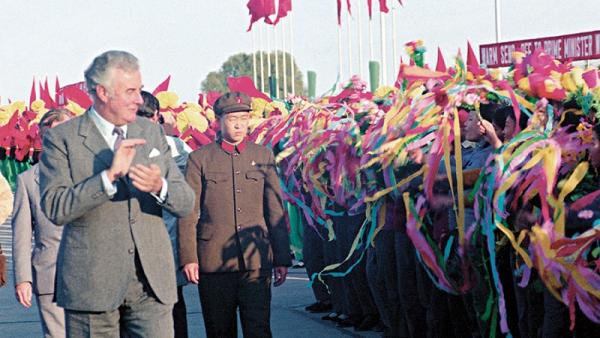
Bob Carr, Director, Australia-China Relations Institute, University of Technology Sydney |
This article appeared in The Sydney Morning Herald on February 21 2018.
When Labor statesman Gough Whitlam opened relations with China it was a Maoist tyranny, more like today’s North Korea than today’s China. It was sunk in poverty. Its people could not travel overseas. They couldn’t move from village to village without party permission. It was illegal to own a small business. And China ran revolutionary movements in Southeast Asia.
No one would argue that today’s China is a democracy or defend its record on human rights.
But, as Bob Hawke points out, its people have vastly more freedom. They can change jobs and buy their own houses. One hundred million a year travel overseas. Public sector employment in China as a percentage of the labour pool is smaller than Australia, even including state-owned enterprises.
It should be easier and not harder to have a China policy based on pragmatic engagement compared with the challenge of Whitlam’s time.
Of course, the Labor Party can’t claim to own China policy. Since Whitlam recognised China there has been a consensus that is embraced by both sides of Australian politics. After all, it was Tony Abbott who ignored a request from Barack Obama and led Australia into the Chinese-sponsored Asian Infrastructure Investment Bank. The Coalition government has ignored hints by US admirals Australia should run American-style freedom of navigation operations within the 12 nautical mile radius of Chinese structures in the South China Sea. The government’s preferred to make our argument through diplomacy. My Diary of a Foreign Minister spelt out how I bluntly disagreed with then-foreign minister Yang Jiechi’s criticism of the rotation of US marines in Darwin. I told him the US alliance was in Australia’s DNA.
But the rapidity and scale of China’s rise has traumatised some in Australia’s defence and security establishment. It’s easy to imagine their anxiety last year, for example, when they read the poll of the ASEAN Studies Centre in Singapore that showed that 74 percent of opinion leaders in Southeast Asia see China as the most influential country in their future, only three percent the US.
Perhaps the worst part of the recent China panic was the demonisation of Chinese students as spies and bullies. One writer, with no evidence, said they were espousing ‘racial chauvinism’. There are 131,355 Chinese university students in Australia and a sober survey of the stories showed the evidentiary base for the raft of inflammatory headlines was a mere four incidents.
That is, a mere four incidents of Chinese students disagreeing with a lecturer. In no case did they close down discussion. No university told their lecturers to apologise. When students at the University of Newcastle told their teacher he was wrong to imply Taiwan was a separate country they were expressing Australia’s effective diplomatic position, not just China’s.
Last year media reported that ASIO had briefed political parties that two Shenzhen/Guangzhou property developers who had donated to political parties enjoy links to the Chinese Communist Party. Any prominent Chinese business figure is likely to have links of some kind with the ruling party in a country that, regrettably, remains a one party state.
One of the property developers – the one who, as it happens, donated to Tony Burke’s campaign – has been an Australian citizen for 20 years. To treat him as still Chinese, not Australian, is to apply a different standard to a Chinese migrant than would be applied to a migrant from Europe who founds a business and chooses to donate to political parties. That is a big departure from the principle of Australia’s multiculturalism that says our one test is citizenship not country of origin.
One Australian academic, Clive Hamilton, attacks university collaboration with Chinese entities. This is a sad example of some Australians becoming bewildered (even outraged) as an Asian power pulls ahead. Is Hamilton saying the Chinese might steal our advantage in high-speed rail? They have about 25,000 kilometres of it and we have none. Or that they would steal our supercomputing expertise? They’ve had the world’s fastest supercomputer since 2010. They lead us in artificial intelligence or quantum communications. The truth is we now have more to gain from research collaboration than they from us.
Within the last 10 years second-tier Chinese cities have grown to look like Singapore. The generation emerging from their universities is the biggest cohort of English-speaking graduates in the world. Southern China used to produce 70 percent of the world’s shoes. It now produces 70 percent of the world’s drones.
I would like to think that this was happening as China moved to democracy but a realist foreign policy stays loyal to our own values, deals with China as it is and stays open to change.
Whitlam put it with his typical eloquence: ‘We seek a relationship with China based on friendship, cooperation and mutual trust, comparable with that which we have, or seek, with other major powers.’ Or we could even take John Howard’s advice that dealing with China is simple: you set aside the areas of difference and work on the things you have in common.
Author
Bob Carr is Director of the Australia-China Relations Institute at the University of Technology Sydney. He is a former foreign minister and was the longest serving premier of NSW.


